The first in the sky. Mikhail Efimov - pioneer of Russian aviation
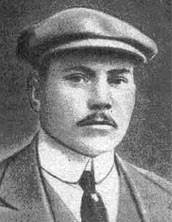 В history Russian aviation forever inscribed in gold letters the names of the "first of the first" - the legendary pilots who stood at the origins of conquering the sky by our compatriots. One of the most prominent Russian aviators of the first wave was Mikhail Nikiforovich Efimov (1881-1919). It so happened that the history of the formation of Russian aviation in those years was largely connected with Odessa. It was here that the youthful and adult years of Mikhail Efimov passed, here on March 21, 1910, the first Russian pilot made his first public flight.
В history Russian aviation forever inscribed in gold letters the names of the "first of the first" - the legendary pilots who stood at the origins of conquering the sky by our compatriots. One of the most prominent Russian aviators of the first wave was Mikhail Nikiforovich Efimov (1881-1919). It so happened that the history of the formation of Russian aviation in those years was largely connected with Odessa. It was here that the youthful and adult years of Mikhail Efimov passed, here on March 21, 1910, the first Russian pilot made his first public flight. Nikifor Efimov, father of the future first Russian pilot, was the son of a serf from Smolensk. He spent his youth in the military service - he served in the grenadier regiment, participated in the Russian-Turkish war. After demobilization, Nikifor Efimov with his wife and three sons arrived in Odessa - in search of work. He managed to get a job as a mechanic at the workshops of the Russian Society of Shipping and Trade (ROPIT). Perhaps it was the technical activity of the father, in combination with his heroic past, that influenced the life choices of Mikhail Efimov. Misha was a sports hobbyist as a child. At that time, the famous athlete Sergey Isaevich Utochkin (1876-1915) lived in Odessa. Possessing excellent physical data, he was engaged in a variety of sports, but in 1895-1905 ... he was most active in cycling races. In many ways, it was thanks to Utochkin that cycling gained mass popularity in the Russian Empire, and hundreds of thousands of young men became interested not only in cycling and racing, but also in physical culture and sports in general. But, of course, the most popular Utochkin received in his small homeland in Odessa. He was the idol of thousands of Odessa boys, and among them was, of course, Misha Efimov. The boy attended the Odessa cyclodrome, and then bought the first bike - the older brother, who received his first salary, gave him the money.
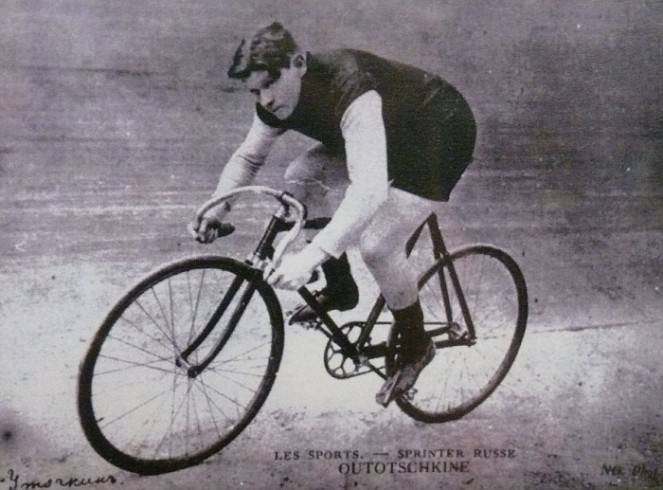
At the age of eighteen, Mikhail Efimov entered the Odessa Railway Technical School with a degree in telegraph communication. This specialty itself at that time was also very advanced - probably comparable to modern IT specialists. For a guy from a simple family, getting an electromechanical-telegraphic diploma was already a great achievement, especially since the presence of such a specialty at that time guaranteed a good salary by the standards of tsarist Russia.
After graduating from college, Mikhail Efimov got a job working as a telegraph electrician. Wages were good here and allowed him to buy a Peugeot motorcycle. For those times it was an unprecedented rarity. When Yefimov was riding a motorcycle through the streets of Odessa, crowds of enthusiastic boys ran after him, stopped and followed adults for a long time after the unprecedented “motor bike”. Inspired by the example of Sergey Utochkin - his senior contemporary and countryman, Efimov actively tried himself in races - only motorcycle, In 1908, he became the champion of Russia in motorcycle sports. However, motorcycles and bicycles by this time did not seem to Michael himself to be something unusual. He became interested in aeronautics - to rise into the air then seemed like a real feat. Mikhail Efimov enthusiastically watched the flights of foreign pilots - the French, who arrived in Russia for demonstrations.
21 March 1908 was created in Odessa by the flying club, which became one of the first in Russia. Mikhail Efimov became his active participant. Interestingly, around the same time, other Odessa cyclists and motorcycle racers became interested in conquering the sky - both Sergey Utochkin himself and his friend Khariton Slavorossov. October 2 1907 in Odessa Sergei Utochkin made an independent balloon flight. However, on an airplane at that time he hadn’t been able to get up in the air. Interesting, but the first Russian graduate pilot was not Sergey Utochkin, but his younger associate Mikhail Efimov.
When the Odessa flying club decided to conduct the first flight on a glider, Yefimov volunteered to carry out this experiment. The flight took place over the hippodrome of Odessa. The glider was towed by car and flew just a few seconds. But even this was enough for Efimov to immediately acquire not only city, but also all-Russian fame. In the fall of 1909, Mikhail Efimov went to France - the most advanced country in the field of aeronautics of the world at that time. A trip to France by a simple Russian electrician was paid for by the rich Odessa banker Ksidias, who later hoped to earn a lot of money by organizing demonstration performances by an aviator.
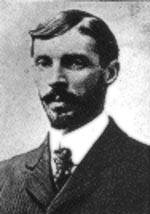
In France, Efimov studied with the legendary Henri Farmann (1874-1958, as pictured) - also in the past cyclist and motorcyclist, then carried away by aviation and created his own aviation company. For thirty years of its existence, the company, created by the brothers Henri and Maurice Farman, has produced over 200 prototype and production aircraft. At a certain time, Farman planes, assembled in Russia, were the most popular aircraft of the Russian assembly. Mikhail Efimov became the first Russian cadet to receive training in France. It was thanks to his studies abroad that he was able to master the skills and technology of aeronautics at that time.
After completing the course, December 25 1909, Mikhail Efimov received the diploma of a pilot - the first in Russia. 21 March 1910 of the year in Odessa, over the Odessa Hippodrome, took place the first public flight of Mikhail Efimov. On the racetrack field gathered over 100 thousand people. Mikhail Efimov lifted into the air five times, making three laps at an altitude of 50 meters and twice taking passengers - banker Ksidias and chairman of the flying club Arthur Anatr. When Efimov landed, the organizers of the event gave him a laurel wreath with a ribbon to the “First Russian Aviator”. And Efimov was really the first. Sergei Utochkin received a diploma at the French Aviation School a bit later, becoming the second certified pilot from the Russian Empire.
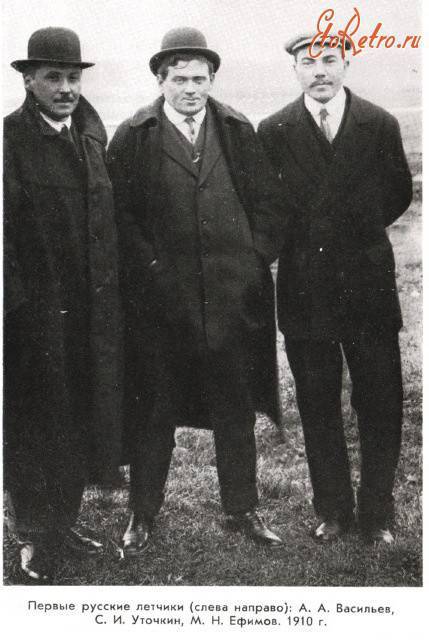
Henri Farman suggested that a talented Russian aviator stay at an aviation school as an instructor. Having approached Farman, Efimov used his help to terminate the contract with Ksidias. According to the contract, Efimov had to work out three years the money that the banker spent on his journey and study in France. But Farman agreed to borrow a large sum for his Russian colleague, and Efimov returned the money to the banker. So he was freed from obligations and was able to quietly do his favorite thing - to improve his skills as an aviator. In April, 1910, Mikhail Efimov won the Nice Aviator Competition and received a large fee, which enabled him to repay Farman and buy his own airplane.
The first Russian pilot actively participated in most international aviation competitions in Europe - in Rouen, Reims, Verona, Budapest, where he always occupied the top places - first or second. At the All-Russian Aeronautics Festival in St. Petersburg, Efimov met Professor Zhukovsky himself, the largest Russian luminary in the field of the theory of aeronautics. The flights of Efimov made a great impression on Nikolai Egorovich Zhukovsky. In turn, the meeting with Zhukovsky contributed to the further growth of popularity of Efimov, his authority in the country. One of the world's first Efimov turns, spirals, dives and planning with the engine off, begins to make night flights. Efimov's skill attracted the attention of the military ministry. The pilot received prizes for lifting the largest load in the air and for the best planning descent. It’s becoming a matter of honor for the military department to invite Russia's first certified aviator to the service. Efimov is invited to Kacha, where at that time the aviation school began its work. Efimov became the official chief instructor of the aviation school and in this capacity continues to serve until the beginning of the First World War. By the way, it was at this time that a friend of the cyclist Khariton Slavorossov arrived to Efimov, who began working as a mechanic for the first Russian aviator and was studying aviation skills himself.
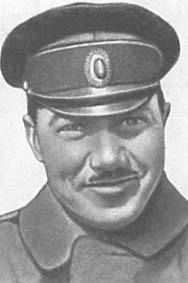 When World War I began in 1914, Mikhail Efimov handed over to the command a report with a request to send him to the front. In April, 1915, he was included in the army as a pilot-hunter 32-th aviation squad. The first Russian aviator begins to make raids to the rear of the enemy, photograph positions, and conduct bombing. Then, Efimov was again returned to the Kachin school, and in November 1915 of the year he was assigned the title of ensign. By this time, Efimov had already become for his combat sorties full Georgievsky cavalier.
When World War I began in 1914, Mikhail Efimov handed over to the command a report with a request to send him to the front. In April, 1915, he was included in the army as a pilot-hunter 32-th aviation squad. The first Russian aviator begins to make raids to the rear of the enemy, photograph positions, and conduct bombing. Then, Efimov was again returned to the Kachin school, and in November 1915 of the year he was assigned the title of ensign. By this time, Efimov had already become for his combat sorties full Georgievsky cavalier. In February, 1916, Efimov was seconded to the 25 corps aviation squad of the Kiev military school of observers, where the pilot began developing his own aircraft. But Efimov failed to complete this interesting project - the pilot was again seconded to the front. One day, Efimov left for Sevastopol without permission to test the details of the airplane. However, the command ordered to detain Ensign Efimov for the unauthorized abandonment of the military unit. The pilot was put on the guardhouse, which was a great humiliation for Efimov. In 1916, Mikhail Efimov was transferred to the Romanian front - to the 6 air force unit. He flew the Newport 11. At the beginning of 1917, the Efimov squadron was transferred to the Sevastopol hydroaviation as a flagship pilot.
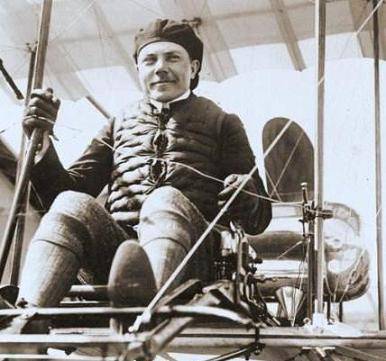
By this time, Efimov had long cooperated with the Social Democrats. Like many other Russian aviators of the first wave, including, for example, Konstantin Akashev and Viktor Fedorov, Mikhail Efimov sympathized with the revolutionary movement and linked the country's future with the socialist development path. After the February Revolution 1917, he was elected a member of the hydroaviation committee. Not only as a pilot, but also as a public figure, Efimov established himself in the difficult days of the February revolution. He launched a propaganda work among pilots and sailors of the hydroaviation. About the views of Efimov was well known to the command, but he was not dismissed - as an excellent specialist and authoritative officer. However, when Crimea was occupied by German troops in the spring of 1918, the Russian pilot Mikhail Yefimov was arrested. He was released only almost a year later, after the Bolsheviks managed to establish short-term control over the peninsula. But in 1919, the Bolshevik government in Crimea lasted only a short time. White troops attacked the peninsula. The Red Army, in which Mikhail Yefimov was already serving at that time, was forced to begin a retreat. Efimov participated in the withdrawal of the Red Army units as a convoy driver. In the area of Kherson the convoy was stuck, so the cars had to be thrown and set on fire - so that the whites would not get it.
Mikhail Efimov on foot reached Odessa - the city of his childhood. However, in August, the White Guards, commanded by 1919 captain of the rank of Kislovsky, landed in Odessa 2. Mikhail Efimov was arrested and soon executed. White did not take into account the merit of the first Russian pilot - for them, Mikhail Efimov was only a dangerous Bolshevik agitator, in addition to everything he had worn officer's shoulder straps. Later it became known that the order to execute Efimov was given by Kislovsky himself. The first Russian pilot was put in a boat and taken out to the middle of the bay. The officer commanding the boat told the pilot that he was given a chance to escape - and ordered him to jump overboard to get to the shore by swimming. Efimov agreed. But as soon as he sailed, the guards opened fire on the pilot.
Mikhail Efimov at the time of death was just 37 years old. He could have lived for a very long time, benefiting his country and the development of aviation throughout the world. But the fate of most of the “golden names” of Russian aviation was tragic. Back in 1916, only in 39 years, Sergey Utochkin died of a stroke. In recent years, he led a marginal lifestyle, there were rumors of alcohol and drug abuse. 26 August 1914, the legendary staff captain Peter Nesterov died in aerial combat. 4 March 1922 in Paris died of throat phthisis Viktor Fedorov - he was also 37 years old. Konstantin Akashev, one of the pioneers of aviation, was lucky at first - after the revolution, he held important command posts in Soviet aviation and leadership positions in the aviation industry. But in 1931, the 43-year-old Konstantin Akashev was shot by conviction of the OGPU Collegium - the aviator was accused of espionage, although most likely the main reason for his arrest and execution was Akashev’s revolutionary past - in his youth he joined the anarchist movement. In the 1941 year, after eleven years in the camp, Khariton Slavorossov, arrested and convicted in the 1930 year, died. Vasily Kamensky (1884-1961) lived a longer life - not only an aviator, but also a futurist poet. However, she, too, was in many ways unhappy - because of his illness, he had amputated his legs at the end of 1930, and in the 1948 year, Kamensky had a stroke and he spent the last thirteen years of his life paralyzed.
The memory of the first Russian pilot, Mikhail Efimov, is stored in the street name in Odessa, several memorial plaques. Monuments to Efimov stand in Gatchina and in Odessa. Back in 1988, the International Planetary Center decided to assign the name “Efimov” to the small planet number 2754.
Information